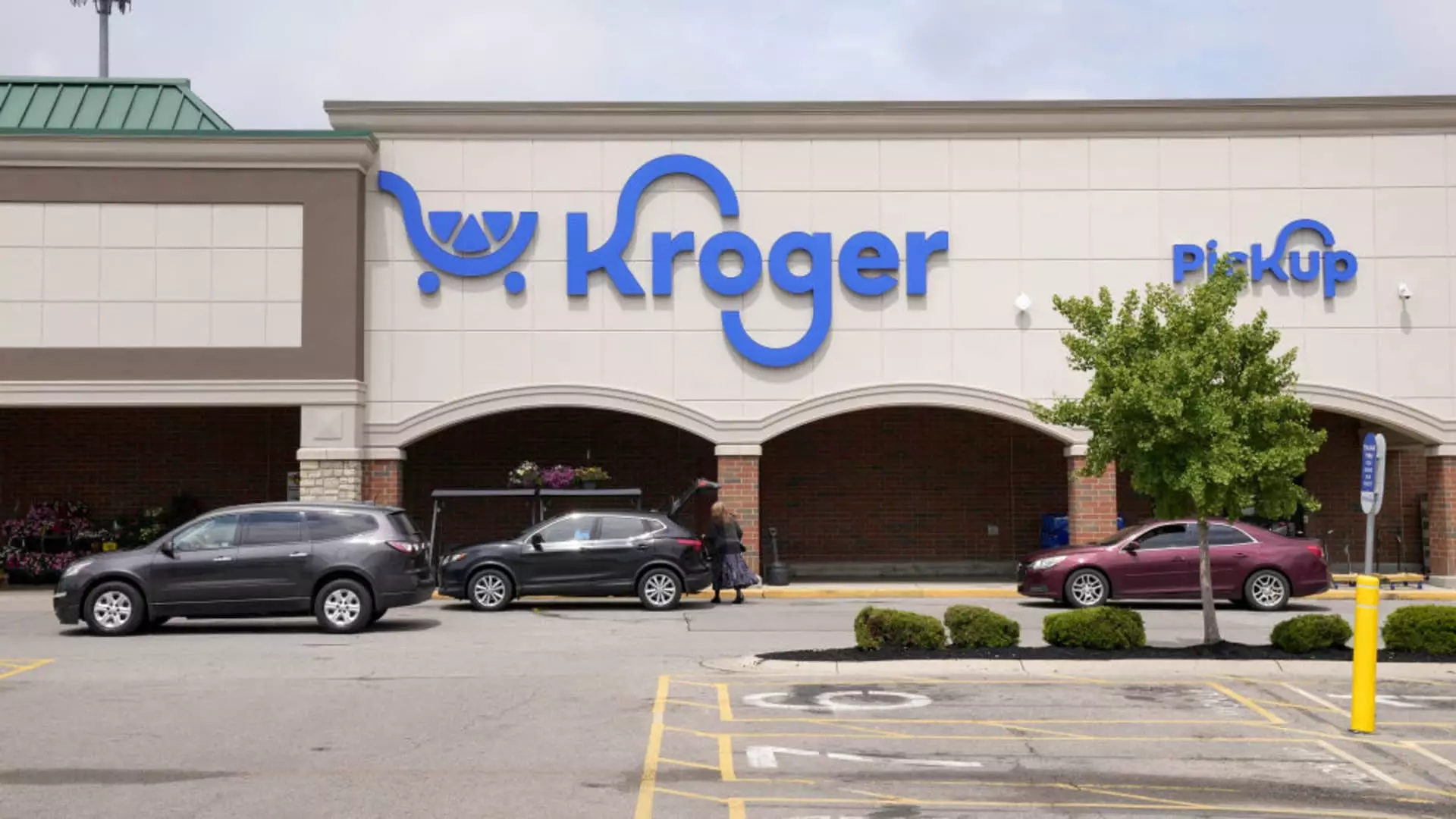Kroger, a prominent player in the supermarket business, has recently witnessed a significant uptick in its stock, climbing by about 10% as it adjusted its sales expectations upward. This resurgence reflects more than just financial metrics—it showcases Kroger’s ability to adapt to shifting consumer behaviors. The supermarket chain is not merely surviving; it is actively thriving by catering to an increasingly cost-conscious customer base. In a time characterized by economic uncertainty and an evolving competitive landscape, Kroger’s strategy stands out as a testament to resilience in retail.
The grocery giant’s new forecast predicts a growth rate in identical sales of approximately 2.25% to 3.25%, a clear improvement from previous estimates. This optimistic projection underscores the company’s strategic focus: targeting shifts in consumer spending habits, especially as dining out becomes a luxury that many are opting to forgo. This calculated move towards promoting lower-priced store-brand items and inexpensive shopping alternatives indicates a keen understanding of economic trends and consumer psychology.
Leveraging E-commerce and Private Labels
One of the standout facets of Kroger’s recent performance is its e-commerce growth, which soared by 15% year over year. As consumers increasingly turn to online shopping for convenience and safety, Kroger’s investment in its digital infrastructure has paid off. It’s not just about convenience; it’s about meeting customers where they are—virtually. Their emphasis on e-commerce partnerships and delivery options positions them favorably against competitors like Walmart and Costco, who are also heavily courting the online shopping demographic.
Moreover, Kroger’s private label products, which have outpaced national brands for several quarters in a row, play a crucial role in their overall strategy. Designed to provide quality at a lower price point, brands like Simple Truth and Private Selection capitalize on health trends and consumer preferences for organic and gourmet products. This strategic focus not only drives sales but also builds customer loyalty. Consumers increasingly view these private labels not as generic alternatives but as trustworthy and desirable options.
Addressing Profitability and Cost Management
Despite these gains, Kroger faces its share of hurdles on the path to sustained profitability. Interim CEO Ron Sargent hinted at potential difficulties in the company’s e-commerce segment, which remains unprofitable. The current strategy includes closing approximately 60 stores over the next 18 months—an indication that the company is not afraid to streamline in order to focus on what truly drives revenue. While the company has expressed concern over unproductive locations, the decision to shut down stores is a sharp reminder of the need for ruthless efficiency in today’s retail environment.
As the grocery sector evolves, so too must Kroger. Sargent and newly appointed CFO David Kennerley are tasked with re-evaluating operational expenses and striving for cost efficiency while avoiding price increases for customers when possible. This preservation of affordability, even amidst inflationary pressures, showcases a commitment to customer loyalty that could pay dividends in the long run.
Leadership Changes and Future Directions
Kroger’s journey has not been without tumult—with the recent resignation of CEO Rodney McMullen and ongoing legal battles over the failed acquisition of Albertsons, the company confronts significant challenges at the leadership level. The search for a new CEO reflects a pivotal moment in Kroger’s history. However, uncertainty within the top echelons of management could lead to inconsistencies in strategy. While interim leadership often brings a sense of stability, it also poses risks if new transformative ideas are not fully embraced.
Kroger must harness its leadership transition to solidify its market position further. The future leader will need an intricate understanding of the grocery business dynamics, alongside a vision that embraces innovation and customer-focused strategies. Only through such alignment can Kroger continue to improve its bottom line, expand its e-commerce capabilities, and compete against retail giants with relentless vigor.
As Kroger navigates through this transformative period, it stands as a fascinating case study for how adaptive strategies, focusing on value and customer preferences, can drive remarkable recoveries in an increasingly competitive landscape. The road ahead is challenging but rife with opportunities for innovative thinking and consumer-centric offerings.

